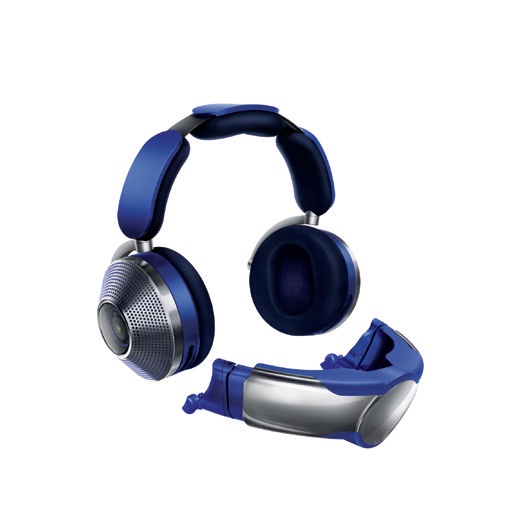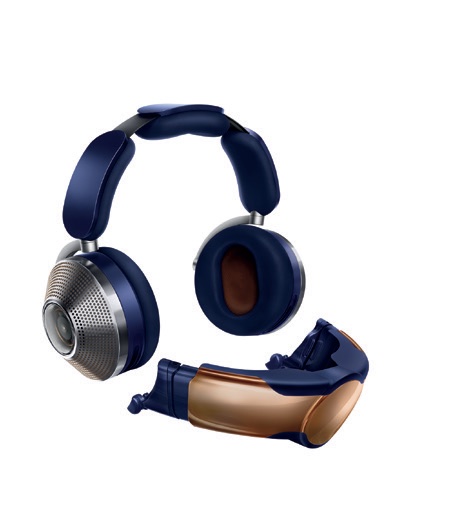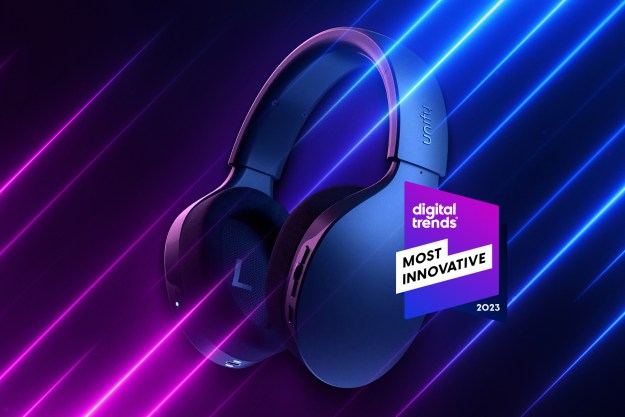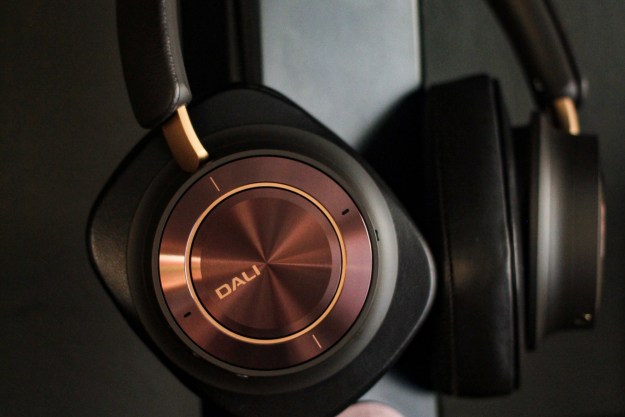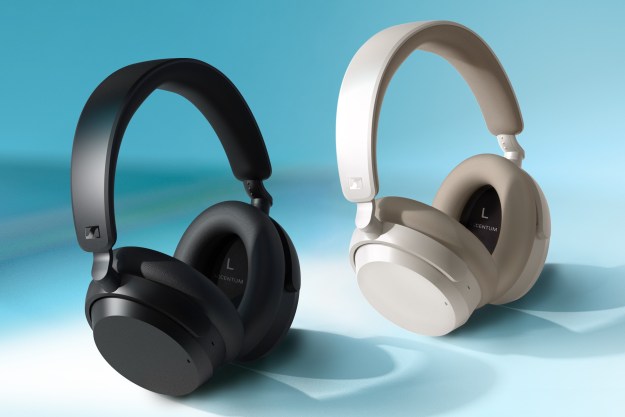If you’ve been patiently waiting to get your hands on what might be kindly described as the most buzzworthy set of noise-canceling headphones on the planet — the Dyson Zone — you’ll get your chance at 11 a.m. ET on April 27. That’s when the headphones, which also double as a personal air purification device, become available for purchase in the U.S. The ear (face?) phones start at $949.
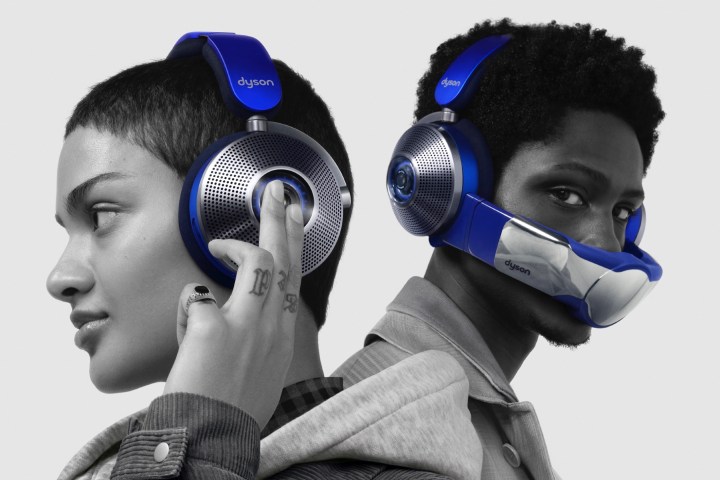
You’ll be able to buy the Dyson Zone in one of two color combos, depending on where you shop. The Ultra Blue/Prussian Blue version will be available at BestBuy.com. It will also be available online via Dyson’s website or one of its Demo Stores, alongside the Dyson-exclusive Prussian Blue/Bright Copper version.
Color isn’t the only difference. The Prussian Blue/ Bright Copper version will also ship with two extra sets of electrostatic carbon filters (the other version only get one set) and an in-flight adapter, plus an extra soft pouch. Dyson hasn’t indicated how much this upgraded Zone will cost.
On their own, the Dyson Zone headphones are unusual, but still within the realm of other wireless can designs we’ve seen before. Add the magnetically attached air purifier “visor” and you’re guaranteed to be the center of attention whether you’re minding your own business on the subway or simply walking on city sidewalks.
The visor might look like the purification system, but it’s actually just the delivery device for the purified air. “Precision-engineered” compressors in each earcup do the real work, drawing air through dual-layer filters and then projecting two streams of purified air to your nose and mouth via the visor.
Dyson claims that electrostatic filters (which last about a year before needing to be replaced) capture 99% of particle pollution as small as 0.1 microns, and the kinds of gases most associated with city pollution, including NO2, SO2, and O3.
The companion MyDyson app lets you adjust the airflow speed and see the NO2 levels of the surrounding air thanks to an onboard sensor. On the audio side of the equation, the app lets you switch between transparency and isolation (noise-canceling) mode, modify the EQ, and access other settings.
At up to a claimed 50 hours, battery life is excellent if you simply use the Zone for audio and active noise cancellation (ANC). But if you want to breathe easy, “low flow” air purification mode only lasts for four hours.
It’s hard to say how effective Dyson’s ANC system will be, especially when you’re running two air compressors right on top of your ears. But it looks good on paper, with eight microphones dedicated to canceling noise and a claimed 38 decibels of sound reduction.
Sadly, despite offering a hi-res audio Bluetooth codec, Dyson has chosen LHDC, which enjoys very little support outside of a handful of smartphones. Everyone else will have to make do with SBC or AAC.
If you end up buying one of these bizarre contraptions, please take a selfie while wearing it and send it to me. I’d love to honor your courage and commitment to clean air.
Editor’s note: this article originally stated that there are three colors of Dyson Zone available in the U.S. This has been corrected.
Editors' Recommendations
- Sony WH-1000XM6: the design and features we want Sony’s next headphones to deliver
- First listen: EarFun’s first over-ear headphones are impressive for $80
- JLab steps closer to Sony and Bose with JBuds Lux ANC headphones
- Apple lets AirPods Pro owners upgrade to USB-C
- What we want from the AirPods Pro in 2024

